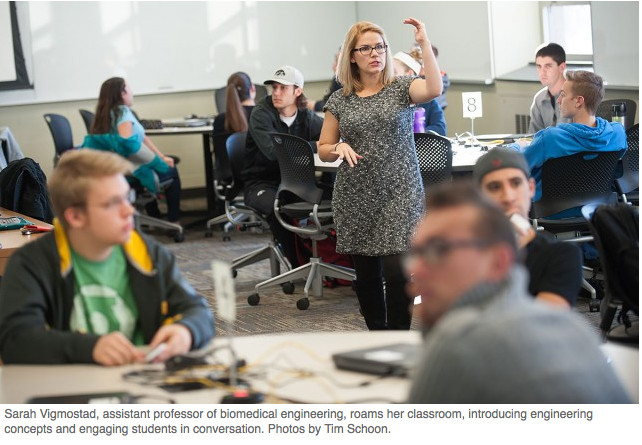Class: Statics
Instructor: Sarah Vigmostad, assistant professor of biomedical engineering
In a spacious Van Allen Hall classroom, Sarah Vigmostad walks past her desk and tells her engineering students: “It seems awfully quiet in here, guys.”
Some 55 students are seated in the TILE (Transform, Interact, Learn, Engage) classroom, gathered at whiteboards in teams of five or six to solve equilibrium problems, and Vigmostad walks

Statics, a class required of all engineering students, is the study of bodies or forces at rest or in equilibrium. Today’s lesson is on distributed loads.
“‘Load’ is another word for force. Distributed loads, or distributed forces, exist everywhere. When we think about wind blowing on our face, we don’t think of that wind only acting on a single point, but acting all over our face; that is a distributed load.
Did you know more than 11,000 students have benefited from the TILE environment at Iowa since 2010? Learn more about the UI's commitment to TILE education, and also see more about biomedical engineering.
“Similarly, if we look at a bookshelf supporting books, we can think of the books individually, or consider the total weight—a type of load— as a single force. If we do that, we need to represent that single force so that it appropriately describes where the heavier books are, and where the lighter books are, on the bookshelf.”
She notes that some engineering principles are ignored at one’s peril.
“We take equilibrium for granted in our everyday life. It’s when things are no longer in equilibrium that we typically notice them—for example, a bridge or building collapsing, a chair breaking, a skier losing control and crashing, and an airplane unable to compensate for huge gusts of wind,” she says.
“This class is much more fun than simply standing and lecturing,” says Vigmostad. “I get to talk with the students individually.”